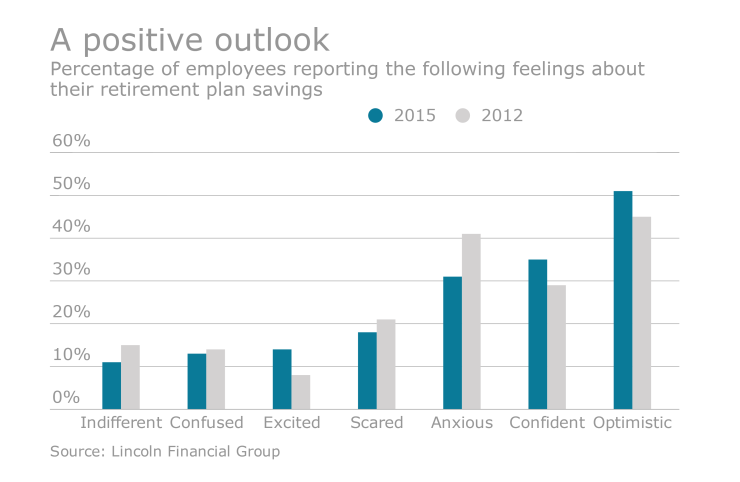In my 30-plus years of working with retirement plans, I have found that the entire concept is an amalgamation between two competing forces: the future and the present. But why competing? Certainly an argument could be made that the present directly correlates to the future — action and reaction. What I mean by competing, however, is that retirement planning is a practice that requires present sacrifice for future potential gain. Not only that, but investing and planning is complicated business. It’s a wonder that plan sponsors make any headway with their participants.
Really, plan sponsors have to embody these competing forces in everything they do. They have to stay abreast of upcoming regulatory changes while maintaining the day-to-day administration of the plan. Next year is gearing up to be a notable year of change for the retirement plan sponsor with the DOL’s fiduciary ruling set to take effect in April. That’s a future problem that plan sponsors need to account for today.

Also see: “
That’s not all, though. For calendar-year plans, now is the time to send out all those annual notices to participants. The non-exhaustive list includes:
1) Safe Harbor 401(k) Notice — Describes the main features of the plan that qualify it for safe harbor status (if applicable). The notice will include the safe harbor matching amount, information on how to make deferral elections and other information.
2) Qualified Default Investment Alternative (QDIA) Notice — Includes information regarding the QDIA, if applicable, its objectives, risk and return characteristics, and a description of a participant’s rights.
3) Annual Participant Fee Disclosures — To satisfy ERISA Section 404a-5, the notice must include information on all fees associated with the plan.
Adding to the workload plan sponsors experience at this time of the year and in this regulatory environment, some of these notices must also be sent to inactive participants with balances in the plan. If one of these participants has not been forthcoming with current contact information, the fiduciary obligation for these notices rests on the plan sponsor’s shoulders. The result is a present cost of a plan sponsor’s time for the future disclosure to participants.
Reading comprehension
So what do participants do with all these notices? It has been my experience that most do not review the materials. It’s akin to hitting ‘accept’ on software’s end user agreement. Few actually read them. These notices, right as they may be, actually tend to increase the present complexity of preparing for retirement, which may lead to a behavioral bias to do nothing. Action and reaction.
Also see: “
It’s not to say that these tasks are without payoff, though. I’ve worked with participants through every stage of their journey toward retirement and I’ve learned: The thankless tasks that plan sponsors do with an eye to their participants’ future, when done with patience and due diligence, will yield results.
This information was developed as a general guide to educate plan sponsors, but is not intended as authoritative guidance or tax or legal advice. Each plan has unique requirements, and you should consult your attorney or tax adviser for guidance on your specific situation. In no way does adviser assure that, by using the information provided, plan sponsor will be in compliance with ERISA regulations. Securities and Advisory services offered through LPL Financial, a Registered Investment Advisor. Member FINRA/SIPC.





